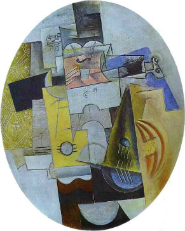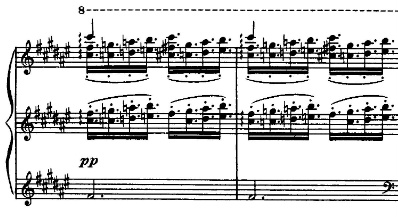
Recurring patterns of signification in music — topoi. The grand unfolding of time and space represented by a steady repeated-pitch ostinato with slow-motion harmonic change around it, found at the opening of Haydn’s Creation, for example. (Haydn could have had a career in sci-fi futurism…)
I heard a pianist play through Debussy’s prelude “…La terrasses des audiences du clair de lune.” Near the end, there’s an anomalous passage that extends an F-sharp-minor harmony, and puts a rhythmic group of 4 in the space of 3, in a square-peg-in-round-hole way. It makes for a few remarkable moments:
Debussy: “…La terasse des audiences du clair de lune”
As I heard it, a question formed. Did Debussy know Schoenberg’s Second String Quartet, written four years before the prelude? And whether he did or not, isn’t the F-sharp otherness topos present in both pieces? (A topos carried through at least from earlier Viennese music such as the second movement of Mozart’s Piano Concerto, K. 488, or the slow movement in Schubert’s Sonata, D. 959.)
In the last movements of Schoenberg’s quartet, there are words of Stephan George, sung by the deeply anomalous fifth participant, a soprano:
Ich fühle Luft von anderem Planeten. (I feel the air of another planet.)
For Debussy, no words.

